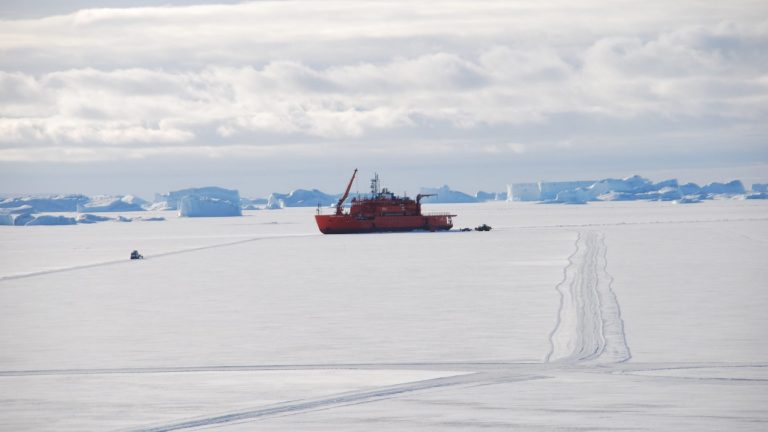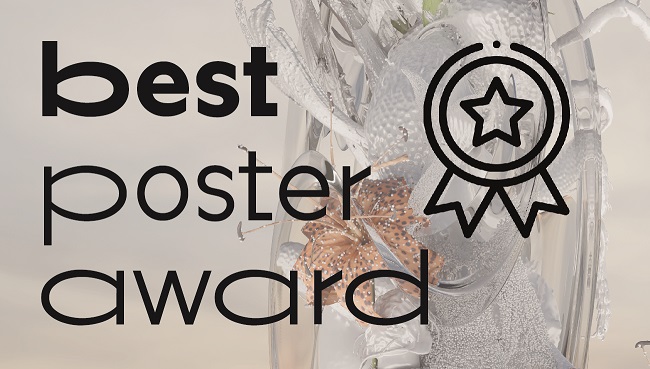Link to the EDOC page with all EPFL Distinction winners
Winners of the
“EPFL Outstanding Ph.D Thesis Distinction in Civil and Environmental Engineering”
2024
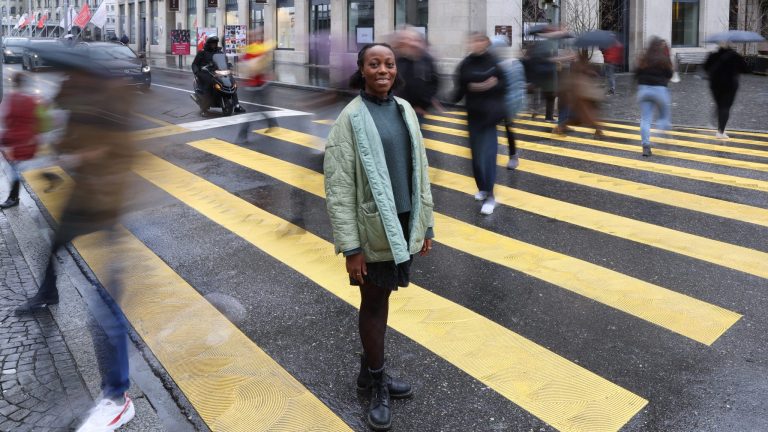
Dr. Janody Pougala
PhD in the Transport and mobility laboratory, TRANSP-OR
Thesis title: OASIS : An integrated optimisation framework for activity scheduling Advisors
Designing efficient, sustainable, and equitable transport and urban systems requires a deep understanding of daily mobility behavior, which centers around individuals and their interactions with the environment. Activity-based travel demand models, which assume travel demand is derived from the need to do activities, are flexible tools that can provide behaviorally realistic insights for various applications.
In my thesis, I developed, estimated, and implemented OASIS (Optimisation-based Activity Scheduling with Integrated Simultaneous choice dimensions), an integrated framework to simulate activity schedules for given individuals. Activity scheduling can be approached as an optimization problem: individuals schedule their day to maximize the satisfaction they derive from the activities they complete while still fulfilling their needs and external constraints. Innovating from the state-of-the-art, OASIS solves the problem by considering all choice dimensions (activity participation, location, schedule, duration and transportation mode) simultaneously, meaning that we can capture trade-offs between different scheduling decisions (e.g., spending less time in an activity to ensure enough time for another one, or choosing locations where multiple activities can be performed). The output is a distribution of likely schedules for each given individual, which can be used to make more accurate transport simulations and design behaviorally-minded policies. OASIS has been successfully implemented in industry and academic collaborations, showcasing the model’s versatility and potential for contributions in different research domains.
As a postdoctoral researcher in the Mobility and Behavior Lab at Northwestern University, I am currently involved in multiple projects using behavioral modeling to achieve transport equity and environmental justice for underserved populations.
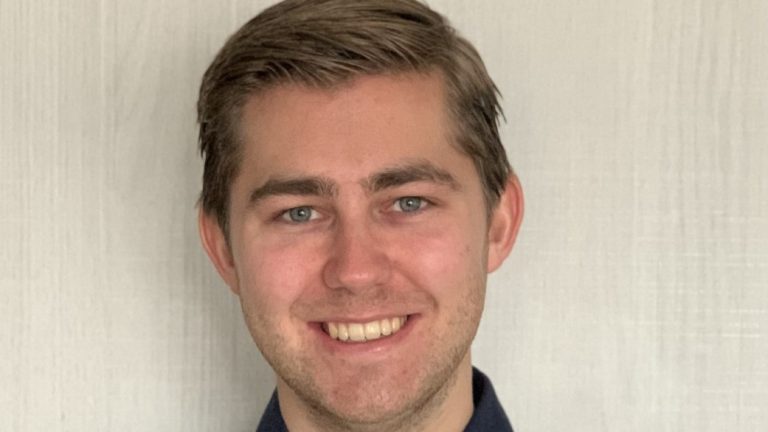
Dr. Patrick Stokkink
PhD in the Urban Transport Systems Laboratory, LUTS
Thesis title: Optimizing the utilization of existing vehicle flows in last-mile passenger transport and logistics systems
The new era of shared economy has raised our expectations to make mobility more sustainable through better utilization of existing resources and capacity. In my thesis, I focus on the design of transport systems that stimulate multi-purpose trips with the aim of reducing congestion while simultaneously leveraging the existing commuters better. Multi-purpose trips can improve the efficiency, sustainability, and profitability of passenger transport systems, through vehicle relocation in vehicle-sharing systems and ride-sharing. Similar improvements can be made in last-mile logistics systems, through crowd-shipping.
This research addresses real-world challenges in modern transportation systems, particularly crowd-shipping, car-sharing, and carpooling, by developing scalable, data-driven, and mathematically rigorous solutions. The approaches blend transportation engineering with operations research and logistics to address complex issues in transportation and logistics systems.
As an assistant professor at the Faculty of Technology, Policy and Management at the Delft University of Technology, I will continue to work on improving sustainability of transport and logistics systems. The concept or improving the utilization of resources and capacity will continue to be a fundament of my research. As a part of this, I will work on integrating passenger and freight transport, across a multi-modal transportation system.
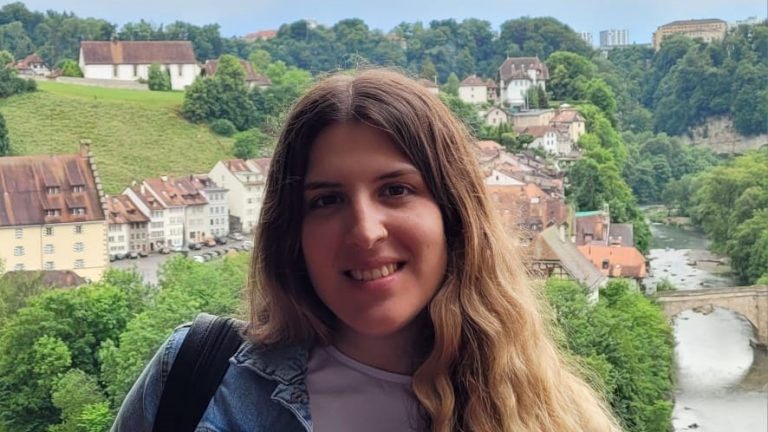
Dr. Paraskevi Georgakaki
PhD in the Laboratory of atmospheric processes and their impacts, LAPI
Thesis title: The role of secondary ice production in mixed-phase clouds
Clouds are ubiquitous in the Earth’s atmosphere, playing a crucial role in weather and climate. Their composition—whether they consist of liquid water, ice, or a mix of both—affects how they interact with solar and terrestrial radiation, as well as how much precipitation they produce. Mixed-phase clouds, which contain both liquid water and ice, are particularly complex and require detailed representation in weather and climate models. However, key processes such as ice multiplication—where ice crystal concentrations increase significantly at relatively warm subzero temperatures—are often neglected in these models.
In my doctoral research, I investigated how ice microphysical processes shape the distribution of liquid water and ice in mixed-phase clouds. By updating the microphysics scheme of a widely used numerical weather prediction model to account for ice multiplication, I simulated snowfall events over mountainous regions. These simulations revealed the critical role of collisions between ice and snow particles, which fragment upon impact, significantly elevating cloud ice concentrations and enhancing snowfall or rainfall reaching the ground. Comparisons with meteorological radar observations revealed distinct signatures associated with ice multiplication, suggesting the potential for systematic detection of these processes using remote sensing data. Recognizing the need to represent these microphysical processes efficiently in large-scale models, I developed a simplified framework for incorporating ice multiplication in polar mixed-phase clouds using machine learning techniques. This framework, now integrated into three European global climate models for the upcoming CMIP7 climate assessment, is expected to improve the representation of precipitation and mixed-phase cloud properties in climate simulations.
Currently, as a postdoctoral researcher at the University of Leipzig, I am exploring the surprising link between smoke particles from extreme wildfires and ice formation in the upper atmosphere. Supported by an SNSF Postdoc.Mobility fellowship, this research is particularly timely given the rising frequency and intensity of extreme events like wildfires in a warming climate.
Winners of the
“EPFL Outstanding Ph.D Thesis Distinction in Civil and Environmental Engineering”
2023
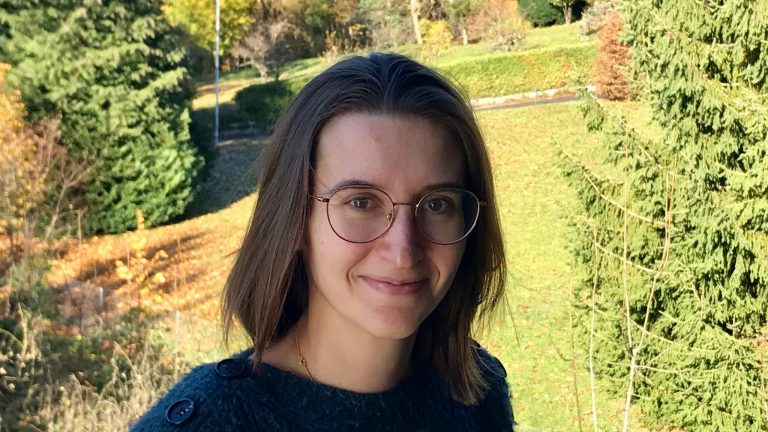
Dr. Anne-Claire Billault-Roux
Ph.D. in the Environmental Remote Sensing laboratory, LTE
Thesis title: Snowfall microphysics: a dual-frequency and Doppler spectral radar perspective
Snowfall is an essential component of the hydrological cycle, as it is involved in most precipitation on Earth, either directly as snow falling to the ground or indirectly as rain melted from snow. At the same time, the ice phase in clouds and precipitation is a key contributor to the Earth’s radiative budget, making it a crucial aspect of climate-oriented research. Properly modeling snowfall for both weather and climate applications requires knowledge of the “microphysics of snowfall”, that is, a microscale description of snow particles and of the mechanisms by which they form, grow, and decay.
Among different approaches to studying snowfall microphysics, remote sensing techniques and, in particular, meteorological radars, offer decisive insights. The goal of my thesis was to investigate the microphysical properties and processes of snowfall by relying primarily on measurements from radars transmitting at different frequencies and on radar Doppler spectra – which disclose how radar signals are distributed between large, fast-falling, and small, slow-falling particles.
One aspect of my work consisted in collecting a multi-sensor dataset of in situ and remote sensing measurements of snowfall, during a field campaign in the Swiss Jura mountains. I then introduced new methods to retrieve cloud and snowfall properties from remote sensing measurements, making use of cutting-edge machine-learning techniques. With a slightly different perspective, I then focused on a specific snowfall event: there, we showed that a lot could be learnt, using radar measurements, about certain ice growth and multiplication mechanisms which are still poorly understood. Overall, this work sheds a new light on remote sensing studies of snowfall microphysics, both in terms of quantifying snowfall properties, and understanding the complex processes at work.
As a postdoctoral researcher at the Environmental Remote Sensing laboratory, I am currently working on a continuation of the research questions I explored during my thesis. My goal is to better characterize the intrinsic limitations and uncertainties of such radar-based studies of cloud and precipitation microphysics, to understand how far we can hope to take them.
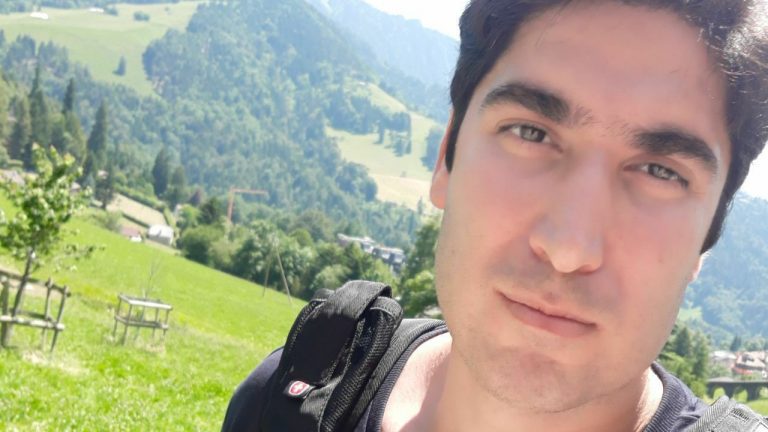
Dr. Mahmood Hamze Ziabari
Ph.D in the Ecological Engineering Laboratory, ECOL
Thesis title: Unraveling submesoscale processes associated with meso- and basin-scale gyres in Lake Geneva
The evaluation of biological, chemical, and physical processes within large lakes, alongside the study of how climate change impacts these processes, mainly relies on conventional single-station monitoring techniques. These methods overlook the lateral variability inherent in the three-dimensional (3D) processes occurring in large lakes. By integrating field observations, 3D numerical simulations, Lagrangian particle tracking, remote sensing data, and statistical analyses, my thesis investigates the dynamics of rotating coherent water masses and their associated submesoscale processes in Lake Geneva. The primary objective of my thesis was to detect and examine previously unobserved or studied 3D physical processes that have been overlooked in the field of limnology. Furthermore, the aim was to elucidate the implications of these dynamics for water quality heterogeneity.
First, a novel framework is developed that permits study the spatiotemporal characteristics of basin-scale and mesoscale processes during different seasons by allowing efficient design of field sampling strategies with unprecedented precision in time and space. Building on this novel framework, the existence of submesoscale processes caused by large-scale gyres is demonstrated for the first time in a lake. The dynamics of pelagic upwelling within a cyclonic gyre in Lake Geneva were investigated. The spatial heterogeneity of water quality parameters caused by (sub)mesoscale flow features is then revealed.
In general, my thesis offers new perspectives on how (sub)mesoscale processes impact the vertical exchange of heat, contaminants and oxygen between the atmosphere and the pelagic zone of large lakes, as well as in oceans where carrying out such field measurements is very challenging.
As a postdoctoral researcher at the CRYOS lab, I am currently involved in the UrbanTwin project. My main focus is on examining the impact of heat islands formed during heatwaves on the temperature of Lake Geneva, as well as investigating how climate change might affect the natural ventilation provided by Lake Geneva in the city of Lausanne.
Winners of the
“EPFL Outstanding Ph.D Thesis Distinction in Civil and Environmental Engineering”
2022
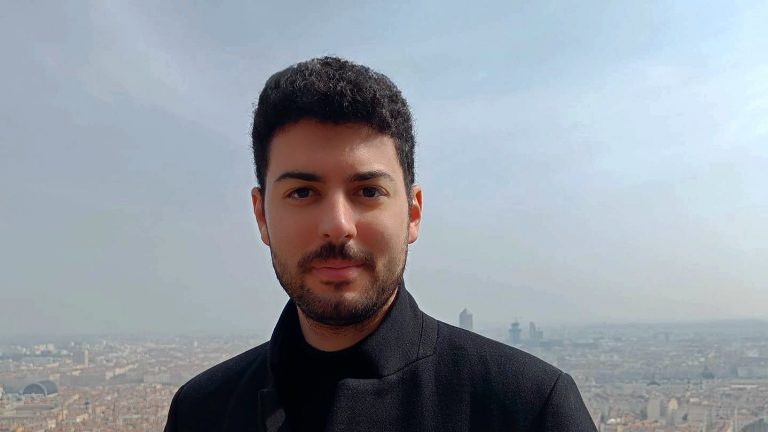
Dr. Andronikos Skiadopoulos
Ph.D. at the Resilient Steel Structures Laboratory, RESSLab
Thesis title: Welded Moment Connections with Highly Dissipative Panel Zones for Enhanced Seismic Performance of Steel Moment Frames
Research conducted after the 1994 Northridge earthquake in the U.S. and the 1995 Kobe earthquake in Japan led to the development of today’s welded beam-to-column connections for steel moment resisting frames in high-seismicity regions. To mitigate fracture-related issues, welded moment connections over the last 25 years feature rigorous weld details that are challenging from a fabrication standpoint. Moreover, the stable hysteretic response of the column web panel zones is not exploited, leading to concentration of damage in the steel beams in the advent of moderate earthquake events, thereby engendering structural repair costs.
My doctoral thesis aimed at advancing the state-of-knowledge regarding the seismic design and behavior of steel moment resisting frames with highly dissipative column web panel zones. Firstly, I developed a new panel zone model that addresses the limitations of available models in literature. The reliability of the developed model allows for a seismic design that exploits the beneficial aspects of panel zone shear yielding. One step further, in my thesis I revisited the current detailing of welded connections by proposing simplifications in their fabrication process, without impairing the connection’s ductility. Full-scale experiments of the proposed connection demonstrated that, contrary to the current design paradigm, a stable hysteretic response is achieved until unrealistically large lateral drifts. Finally, in my doctoral thesis I demonstrated through large-scale system level simulations that steel moment resisting frames designed with the proposed connection design methodology enjoy up to two times lower seismic collapse risk and reduction in the structural repairs in the advent of earthquake events compared to the current status quo.
As a postdoctoral fellow at EPFL in the Resilient Steel Structures Laboratory (RESSLab), I am currently focusing on characterizing fracture in welded moment connections for capacity designed steel moment resisting frames.

Dr. Joseph Lemaitre
Ph.D at the Laboratory of Ecohydrology, ECHO
Thesis title: Modeling infectious disease dynamics towards informed public health interventions, with applications on COVID-19 and cholera
Centuries after the first cholera pandemics and 160 years after the realization that safe drinking water and adequate sanitation prevent its transmission, cholera remains a threat to millions living in hotspots or at-risk areas. The recent emergence of the new coronavirus disease 2019, COVID-19, and the strain it put on the world’s most advanced healthcare systems recalls the constant risks posed by emerging diseases. Today, communicable diseases cause approx. 15% of global deaths every year. In many cases, the burden of these diseases is preventable through public health interventions. However, taking the right decisions and designing effective policies is an intricate task: epidemics are complex phenomena resulting from the interaction between the environment, pathogens, individuals, and societies.
My thesis explores modeling as a way to reason about infectious disease dynamics from scarce and biased information and to guide decision-makers toward effective policies. The results presented range from scientific insight on the relationship between cholera and rainfall in Juba, South Sudan to the COVID Scenario Pipeline, a modeling framework that produces reports used to inform the response to the COVID-19 pandemic of different governmental entities. Furthermore, the effectiveness of the non-pharmaceutical interventions against COVID-19 in Switzerland is evaluated; and so is the probability of eliminating cholera from Haiti under different scenarios of mass vaccination campaigns. Finally, the development of an optimal control framework towards the effective spatial allocation of vaccines against SARS-CoV-2 in Italy closes this conversation of models. From scientific insights on transmission pathways to weekly reports distributed to health officials, my thesis demonstrates how infectious disease modeling enables informed decision-making by projecting uncertainties under the light of the available evidence. It also highlights the effort needed to tailor the models and inference methods to the specificities of the transmission setting and the research question considered. Methods developed along the way enrich the toolbox available to modelers, to guide policy decisions further toward a reduction of the burden of infectious diseases on communities around the world.
As a postdoctoral researcher at the Gillings School of Global Public Health at the University of North Carolina at Chapel Hill, I am currently working on the direct continuation of my thesis, producing regular forecasts of influenza and COVID-19 transmission while developing novel statistical approaches for infectious disease modeling.
Best Poster Award 2024
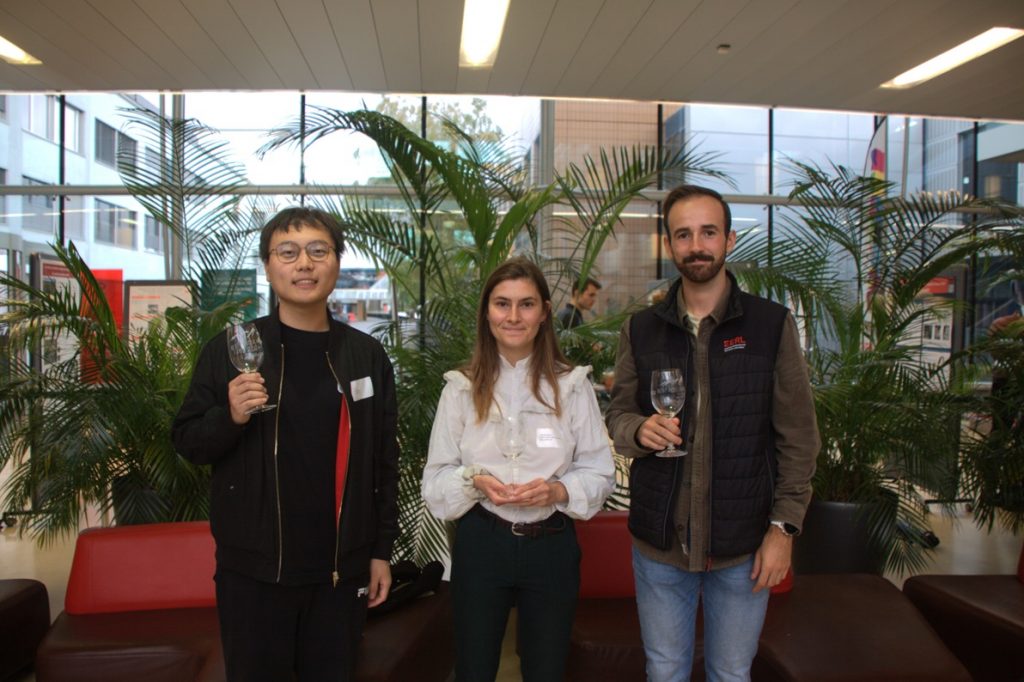
Camille Rolland, 1st Prize for the Best poster Award
Poster title: Harnessing microbial processes for hydrogen consumption in a radioactive waste repository
In Switzerland, radioactive waste will be disposed of several hundred meters below ground in a stable geological layer. A major challenge is the risk of pressure build-up due to hydrogen gas production resulting from the anoxic corrosion of steel waste-containing canisters. Gas-porous sand-bentonite will be used as a backfill material to enable the transport of gas out of the disposal caverns. Sand-bentonite also offers an appropriate pore space for an active hydrogenotrophic microbial community to thrive. We need to answer three questions: (1) Can hydrogenotrophic microorganisms adapt to backfill material where water availability is limited? (2) How fast do they consume hydrogen? (3) Is this effective for total pressure reduction? We designed hydrogen-tight reactors to mimic the expected repository conditions. By monitoring the total pressure and gas composition for 3 months, we quantified hydrogen consumption and the resulting total pressure decrease. Gas-phase analysis indicates the activity of methanogens and sulfate-reducing bacteria. This study provides an accurate rate of hydrogen consumption in a porous repository backfill, which can be used to model the evolution of pressure in the repository.
Benjamin Heutte, 2nd Prize for the Best poster Award
Poster title: Sources and processes governing the annual cycle of aerosol chemical composition in the central Arctic
Aerosols play a crucial role in the radiative balance of the Arctic, a place that is warming at faster rates than anywhere else on Earth. However, limited observations in the central Arctic leave gaps in understanding aerosols dynamics year-round, affecting model predictions of climate-relevant aerosol properties. In our study, we used a unique dataset from a year-long ship-based expedition in the central Arctic Ocean (MOSAiC) to investigate the sources, emission processes, and potential radiative impacts of Arctic aerosols. Overall, we found that the annual cycle in aerosol chemical composition was driven by large scale atmospheric dynamics (such as the cyclonic activity), shortwave radiation, and marine biological activity. Our study also highlights the need to integrate short-timescale processes, such as wind-driven aerosol sources, into model simulations, as these were shown to have an important contribution to the fraction of aerosols that can activate into cloud droplets. The results from this study will ultimately serve to improve our understanding of aerosol sources and physicochemical properties, as well as their role in the central Arctic radiative budget, in an effort to improve climate model predictions in the region.
Ce Wen, 3rd Prize for the Best poster Award
Poster Title: Development of Seismic-Resistant Welded Connections for Deconstruction and Reuse of Steel Structures
This poster proposes an innovative beam-to-column connection typology for steel MRFs. The new typology is designed with the primary objective of enhancing the reusability of primary structural members after earthquakes. The design requirements for the envisioned concept are developed via analytical and numerical approaches that leverage inelastic stability theory as well as continuum finite element simulations. Moreover, geometric tolerances in current standards are utilised for quantifying the benefits of the concept and the reusability of structural members undergoing mechanical loading. Finally, the proposed typology will be validated with full-scale beam-to-column subassembly experiments at the large-scale structures laboratory (GIS) at EPFL.
Best Poster Award 2023
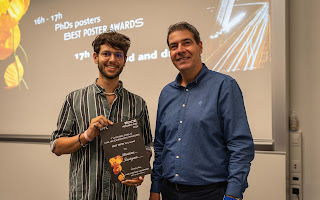
Massimo Bourquin – Jury Award
Global Response of Glacier-Fed Stream Bacterial Microbiome to Climate Change
The poster “Global Response of Glacier-Fed Stream Bacterial Microbiome to Climate Change” delves into the implications of climate change on the glacier-fed stream ecosystem. Using a modelling approach combined with a global sampling of glacier-fed streams gathered by the Vanishing Glaciers Project, this study aims at understanding how these unique ecosystems will be altered by the combined effect of climate change and glacier shrinkage, especially the bacterial communities. Under future conditions, the latter are predicted to overall increase in abundance as primary production increases. However, this growth is accompanied by ecological shifts and we highlight potential risks to specific taxa. Additionally, the modelling approach enabled to improve our comprehension of how climate, glacier influence, and physicochemical factors interplay to shape glacier-fed stream ecological communities.
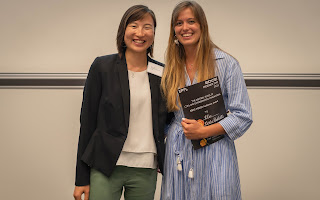
Cloe Cortes Balcells – Audience Award
The SARS-CoV-2 pandemic highlights the need to understand human mobility for disease control. Mobility patterns, vital in virus transmission, require modeling individual behaviors. The epidemiological models can be categorized into three types: compartmental, network-based, and activity-based. Although activity-based models demand greater computational resources, they allow a more detailed representation of individual behaviors, positioning them as critical for predicting the spread of a disease. However, the literature indicates that these models tend to focus primarily on infection probabilities, overlooking personal choices like testing decisions. This study refines the activity-based model by integrating latent states for agents’ behavior, combining infection probabilities, and testing propensities based on health and socioeconomic factors.
A core element of our model is the ‘awareness’ indicator modeling if an individual knows to be infected. From a mobility standpoint, awareness is crucial as an individual’s activity-travel behavior is altered only when being aware of the infection. Using a dynamic, fully disaggregated model, we trace each individual’s decision-making sequence, offering a detailed perspective on testing decisions and daily infection dynamics.
Best Poster Award 2022

Tatjana Milojevic – Jury Award
Impacts of Extreme Precipitation on Alpine Reservoirs
This poster is about the investigation of the impacts of extreme precipitation and drought events on Alpine reservoirs. First, a comparison of traditional and novel approaches for determining the return periods of extreme events is presented. These results, in combination with general expected changes in precipitation in Switzerland (both average and extreme) are used to generate precipitation (or drought) sample scenarios across different seasons. Potential impacts on reservoir water levels and the resulting effects on electricity production potential in various seasons are then shown. The important point is that not all reservoirs are equally vulnerable to the same type of event or at the same time of year. Therefore, understanding the spatial dynamics of extreme events and assessing the impact risk at a local level is a critical next step.
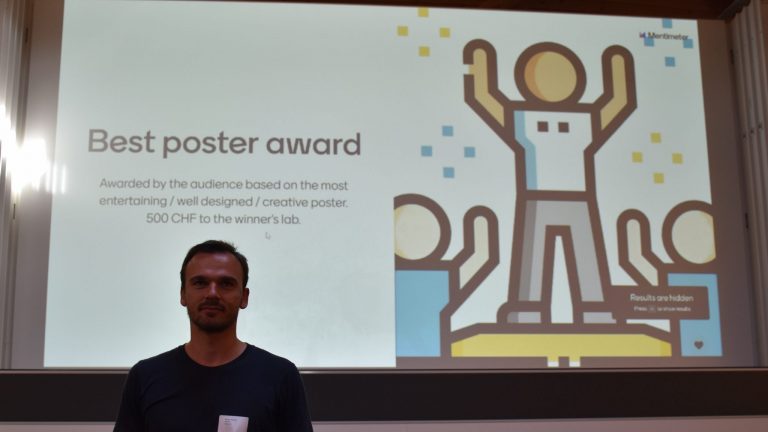
Marko Pejatovic – Audience Award
The poster design is symbolically linked to cracks in concrete.
Cracked concrete structures are typically acceptable, but not always. There are different conditions when cracks have to be verified. One of the cases when cracks might be problematic refers to stress concentrations in steel reinforcing bars close to cracks due to the dowel action (the transverse force causing the local bending of the reinforcement).
The poster presents relevant steps of an experimental investigation on the dowel action in concrete structures. First two steps show the test set-up and a specimen which is equipped by advanced measurement devices such as Digital Image Correlation (DIC) and Optical Fibres. Representative results based on these measurements are treated in steps 3-5. The step 6 at the bottom of the poster gives a chance to ask a question.
Mobility Award winners

Martin Boutroux
My PhD in the RIVER team aims at resolving the diversity and the role of viruses within alpine stream biofilms. A biofilm consists of microorganisms across all life domains forming surface-attached and matrix-embedded communities. This is the “Aliens vs. Predators” of PhDs in biology as it consists in looking at the struggle between the most common organism on the planet and the most common way of life for living organisms (thus excluding viruses).
To decipher these interactions, we sampled rocks and sediments from mountain ranges all over the world (11 mountain ranges on all continents except Antarctica) and extracted the DNA. Bioinformatic analysis allowed the DNA assembly of thousands of microorganisms. Among viruses, the most common are phages, which are viruses infecting bacteria.
Selective pressure is at play in this environment with bacteria using defense mechanisms to prevent viral infections, as well as viruses harboring counter-defense systems to bypass bacterial resistance and successfully propagate. Aude Bernheim’s team in Institut Pasteur Paris is one of the leaders in studying how bacteria defend themselves against viruses. My three-month stay with them will provide an opportunity to push my data analysis further and examine specific defense and antidefense patterns between viruses and their hosts within my understudied environment.

Marc Duran Sala
My PhD at EPFL investigates how urban diversity—recognized to foster quality of life—shapes climate, mobility patterns, and social inequalities within cities. Using tools from network science and statistical physics, I analyze high-resolution data on temperature, air pollution, and urban form across multiple cities, with the goal of developing a general framework to understand intra-urban variability and its impacts.
During the initial stages of my research, I developed a universal scaling framework to describe intra-urban climate variability across cities worldwide, linking climate patterns to the underlying urban morphology. The next steps will focus on exploring their impact on social inequalities and understanding the structure and mechanisms behind the diversity of points of interest and activities in urban environments.
To deepen this research, I will visit the Senseable City Lab at MIT, led by Prof. Carlo Ratti—a world-leading group operating at the intersection of cities, people, and technology. This academic stay will provide an opportunity to refine my models through innovative methodologies and explore new datasets related to urban diversity, human mobility, and climate. The collaboration will strengthen ties between EPFL and MIT and contribute to advancing research in urban complexity.

Yufei Zhang
My PhD study at the Engineering and Technology for Human-Oriented Sustainability Laboratory (ETHOS) aims to develop data-driven approaches that facilitate demand-flexible building management and overcome existing barriers to occupant-centric building operation strategies.
Over the past years, I developed a data-driven framework that disaggregates whole-building load metering by each system and extracts underlying occupancy levels from it. This framework can be integrated with the building load monitoring platform and assist building operators in evaluating the occupant responsiveness of current operation strategies. I plan to further explore data-driven solutions that suggest demand-flexible building system operations and organizational interventions to influence occupant behavior.
The Lawrence Berkeley National Laboratory (LBNL) conducts pioneering studies in the field of building energy systems. During my academic visit there, I would like to expand and solidify my current work of building thermal and ventilation modeling and operation optimization. I could benefit from the team’s strong competence in data-driven modeling and rich engineering experience of building operations. I believe this visit will boost my PhD study to a holistic solution that is ready for real-world challenges of building management.

Lisa Jourdain
I am Lisa Jourdain, a PhD student at the Laboratory of Microbial Physiology and Resource Biorecovery (MICROBE). My research aims to develop mechanistic models of anaerobic digestion (AD) by integrating microbial physiology, metabolism, ecology, and operational factors. This work is crucial for optimizing the production of short-chain carboxylic acids from organic waste, contributing to resource recovery and the circular economy.
As part of my PhD, I have already conducted anaerobic enrichment experiments and am analyzing meta-omics data to understand community dynamics in AD systems. The next phase of my project focuses on rationally designing synthetic microbial communities for AD, based on metabolic insights from genome-scale metabolic models. To advance this phase, I will be hosted by Prof. Cremer at Stanford University.
Prof. Cremer’s expertise in microbial physiology modeling and his interdisciplinary background make his lab an ideal environment for enhancing the computational and theoretical aspects of my work. This visit will be instrumental in bridging experimental and computational approaches, enabling me to develop robust predictive models for AD that can optimize microbial community design for biotechnological applications.

Janisse Deluigi
The aim of my PhD at the Plant Ecology Research Laboratory (PERL) is to determine how warming and drought individually and simultaneously impact tree net carbon uptake and the potential role of biodiversity in modulating these effects in natural forests.
Over the past years, I conducted a climatic manipulation in open-top chambers and a field experiment in a natural forest in the warm and dry region of Valais, to assess trees responses and acclimation capacity to a warmer and drier climate and the modulating role of tree species interactions. During these experiments, I realized that while increasing species diversity is a forest management strategy widely used to mitigate climate change impacts, little is known about how these more diverse forests are created.
During my academic visit at the University of Freiburg, I will have the opportunity to work with Prof. Jürgen Bauhus, who is the leader of the Chair of Silviculture and has a deep knowledge on forest management and climate change ecology. Under his guidance, I would like to review how more climate-resistant forests are created, where do they occur and what are their consequences for ecosystem functions and processes, providing key information for the community working in this field and beyond.
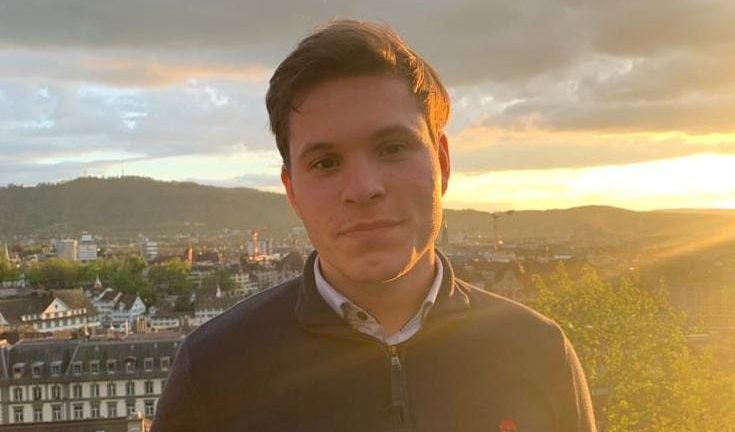
Jaïr Campfens
My PhD research at EPFL focuses on using participatory modelling to develop sustainable energy scenarios. More specifically, my work integrates quantitative modelling approaches with socio-technical insights to achieve high shares of decentralized renewable energy for Swiss cities, midlands, and alpine regions.
During my academic visit to the Planning of Landscape and Urban Systems (PLUS) group, I will specialize myself in Dynamic Bayesian Networks (DBNs), which add a temporal dimension to traditional Bayesian Networks. These models will track changes in key energy indicators, such as greenhouse gas emissions, over time, making them highly relevant for long-term energy planning.
Through three workshops in the Swiss city of Winterthur, I will validate the DBNs with stakeholders, ensuring their practical applicability. By engaging with stakeholders, my research bridges the gap between theoretical models and practical implementation. This collaboration with the PLUS group will advance my research and contribute innovative tools for energy transition planning in Switzerland.
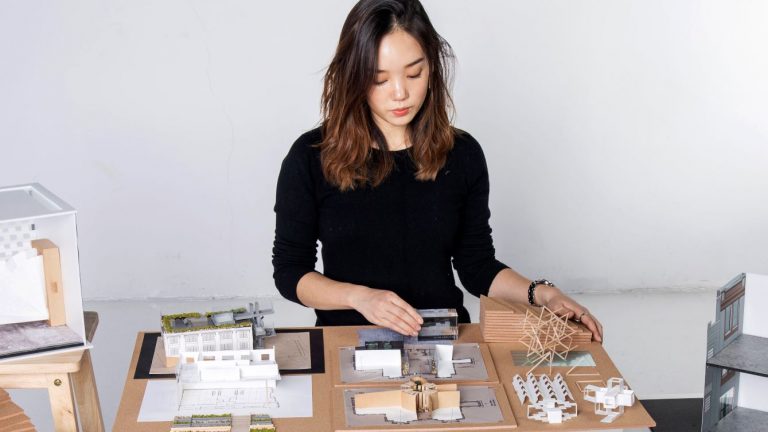
Yunjoung Cho
As a member of the Laboratory of Integrated Performance in Design (LIPID), my PhD research focuses on exploring the dynamic elements of window views and their impact on the health and well-being of building occupants. Over the past years, I have conducted experiments to examine the effects of different types of movement and changing daylight conditions on participants’ view-out experiences and developed methodologies to effectively incorporate dynamic elements of outdoor environments into views-out research. During my academic visit to the Technical University of Vienna (TU Wien), I will collaborate with Assistant Prof. Milica Vujovic and the Hietzing psychiatric hospital. Our work will involve site analysis, urban research, and interviews and observations with healthcare workers and researchers in psychiatric hospital design. This will help us understand how architecture shapes human experiences and occupant behaviors, focusing on the impact of accessible window views and access to nature.
This collaboration is expected to provide invaluable insights into the practical applications of my research on views-out quality within a healthcare setting, where well-being and addressing basic human needs is crucial. It also has the potential to enrich and refine, or perhaps even challenge, the applicability of my PhD research. Additionally, the collaboration extends to Ulrike Brandi Licht, an international architectural lighting design office in Hamburg. They will support the project by providing expertise and guidance in architectural design principles, helping to create high-quality visual and descriptive representations of the data. This ensures that the research outcomes are both scientifically robust and practically applicable. I am confident that this experience will enhance my research and contribute to the broader field of built environment research by emphasizing the importance of qualitative data in capturing the human experience.
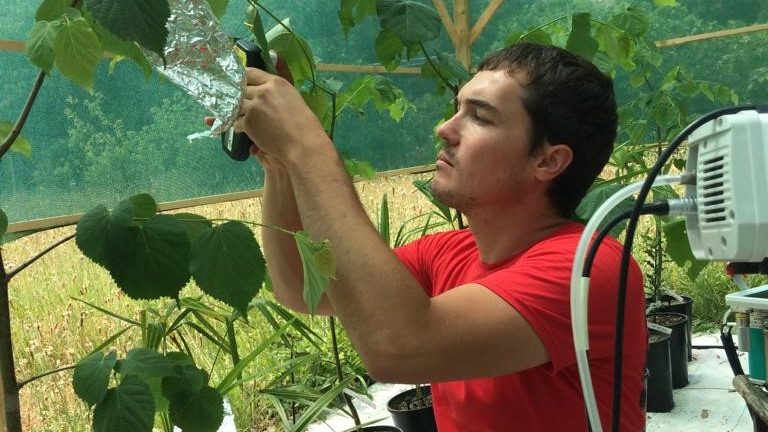
Thibaut Juillard
In the frame of my Ph.D. studies at the Plant Ecology Research Laboratory (PERL), I study the spread of non-native evergreen tree species in Switzerland, in particular invasive palm trees. In natural forests, these exotic species compete with the local ones and may alter their growth and survival, having negative consequences on biodiversity, wood production, nutrient cycling, etc.
The effect of drought events on these species is poorly understood and could have positive or negative impacts on their spread. For this reason, I am interested in measuring physiologic traits related to reduced water availability in exotic plants.
During my academic visit to the University of Tasmania (UTAS, AU), I will have the opportunity to work with Prof. Tim Brodribb, who is a renowned ecophysiologist specializing in plant water transport and use. In particular, he developed a novel, non-destructive method for measuring drought impacts on plants’ leaves and stems using cameras. Under his expert guidance, I would like to learn how to use this method and develop a measurement station at EPFL.
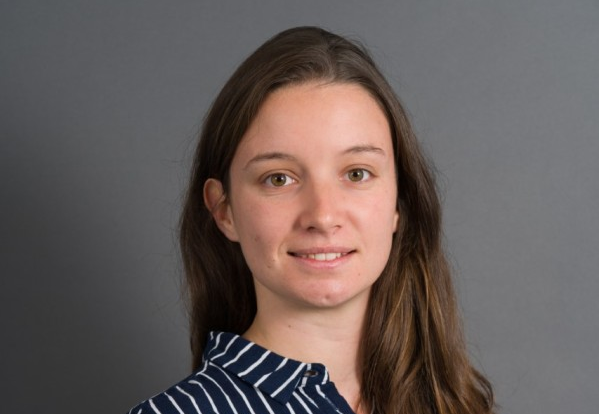
Valérie Zermatten
A member of the Environmental Computational Science and Earth Observation Laboratory (ECEO)
In collaboration with Swisstopo, my PhD project is centered around the application of deep learning techniques to map mountain ecosystems by leveraging diverse data sources, including remote sensing imagery, crowdsourced species observations, and textual descriptions. During the initial stages of my PhD, I developped an interpretable and interactive approach for characterizing terrestrial ecosystems based on aerial imagery provided by Swisstopo.
The next phase of my project aims to integrate species observations obtained from citizen scientists database such as the PlantNet Project. This task poses significant challenges, as crowdsourced observations are susceptible to various sources of biases, from the irregular collection process to species misidentification.
My research stay at the National Institute for Research in Digital Science and Technology (INRIA) in Montpellier, France, is a great opportunity for working alongside Prof. Diego Marcos and Prof. Alexis Joly, member of the PlantNet Project since its start. This collaboration allows me to gain valuable insights into how to effectively exploit crowd-sourced ecological data, ultimately enhancing the characterization of alpine ecosystems.
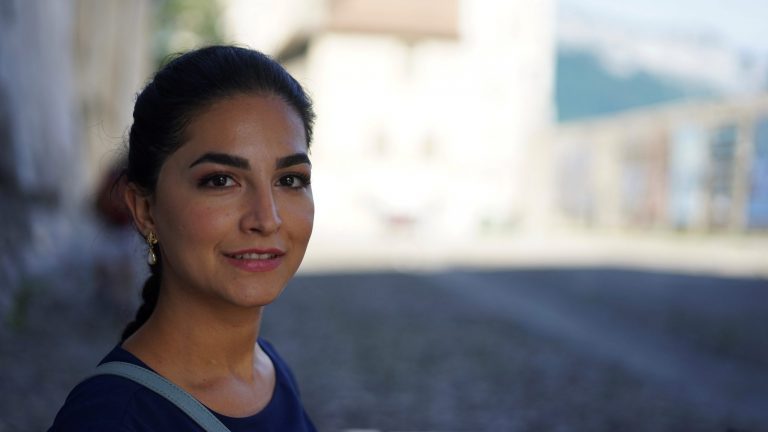
Negar Rezvany
As a member of the Transport and Mobility Laboratory (TRANSP-OR), I am conducting research on integrating interactions into activity-based models. We have developed a methodology that reconstructs the daily activity schedules of individuals in a household, explicitly accommodating complex interactions among household members such as allocation of the car to household members, escorting children, joint participation of household members in activities, and sharing rides. This methodology uniquely allows capturing multiple interaction dimensions within the same framework. This framework differs from the existing activity-based models treating individuals as isolated agents, which are limited in their demonstration of behavior. Understanding and predicting complex behavior and interactions is the key to better demand-side management and adapting infrastructure systems (transportation, energy, etc.) to deliver critical services that meet the needs of society. The model works well with multi-member households and captures complex behaviors and interactions.
The Human-Centric Modelling Laboratory, directed by Dr. Tim Hillel at University College London (UCL), is focused on developing decision-aid models and tools to plan future built environments (spanning a variety of fields such as mobility, energy consumption, or infrastructure maintenance) by considering holistic systems centered around people. My academic visit to UCL would allow me to work more closely with Dr. Tim Hillel on the application of our developed methodology in addition to exploring other practical extensions of our framework in collaboration with researchers at UCL.
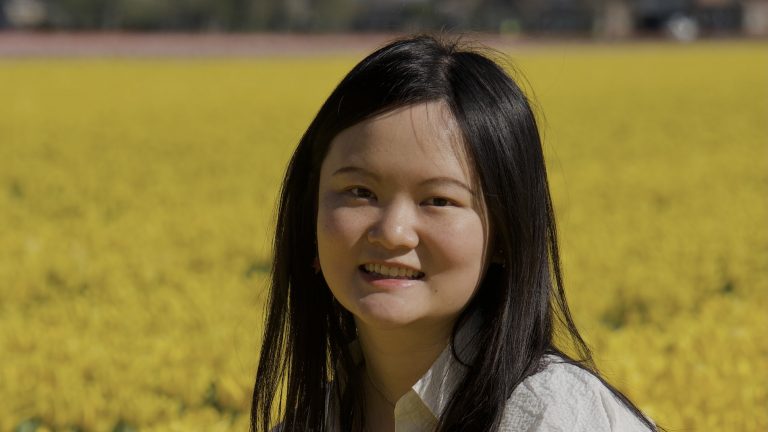
Qianqing Wang
Member of Earthquake Engineering and Structural Dynamics Laboratory (EESD)
Masons with years of training are needed for the construction of masonry structures. However, the scarcity of skilled masons motivates us to create intelligent construction robots for improving the productivity of the construction industry aiming at the reduction of its environmental impact. In this regard, my PhD thesis focuses on the development of efficient methods for guiding robots to perform stone-stacking tasks aiming at specific design requirements, such as seismic load resistance. Currently, I am developing an image-based stacking algorithm for finding the best sequence of actions for placing stones during the construction of stone masonry walls. Given photos of available stones, the algorithm tells robots how to select stones and where to place it. However, the computational cost of this approach could be prohibitive for real-time applications.
During my academic visit to the University of Minnesota, I plan to work with Prof. Dos Santos to create a model-free solution based on reinforcement learning. Prof. Dos Santos is an expert in the development of numerical methods for optimization and uncertainty quantification of complex engineering systems. His expertise in machine learning will help me develop an efficient decision-making framework for large-scale buildings made of irregularly-shaped stones. We expect the method to be broadly useful for application in autonomous construction.
Other awards won by EDCE students

Dr. Oliver Selmoni
ENAC Doctoral Research Award in the field of environmental engineering for the publication entitled:
“Seascape genomics as a new tool to empower coral reef conservation strategies: An example on north-western Pacific Acropora digitifera.”
The future of coral reefs is under threat since anomalous heat waves are causing the death of reef building corals around the world. Without corals, the entire reef ecosystem is expected to collapse, threatening the survival of up to one third of marine wildlife. Despite the catastrophic perspectives, a glimmer of hope is brought by corals that persist at reefs exposed to recurrent heat waves. Evolutionary adaptation might underpin these observations.
In this publication, we used an approach called seascape genomics to characterize the adaptation to heat stress in a coral population from Japan. We first used remote sensing data to portray patterns of thermal stress across all the reefs of the study area, and then analyzed the genetic variation of corals living across this thermal gradient. We uncovered genetic traits that are more frequent in corals living at reefs exposed to recurrent heat stress. Finally, we predicted the distribution of these adaptive traits for every reef of the study area. This information is of paramount importance, as it constitutes a to-date missing criterion to prioritize reef based on their adaptive potential.
As a postdoctoral fellow at LASIG, I am currently working on extending the seascape genomics approach to other reef systems around the world.

